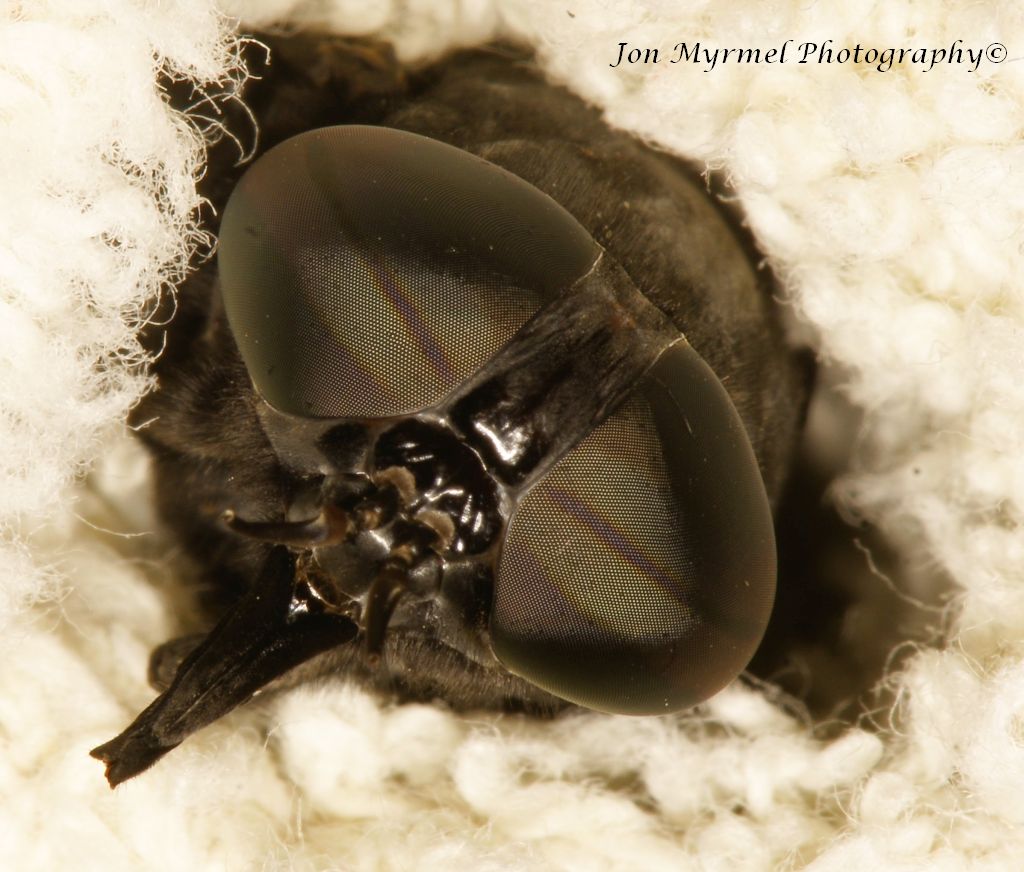When I opened the back door this morning to let my cat out, I heard a loud buzzing next to my ear. It was an enormous pitch-black fly, over an inch and a quarter long, sitting on the screen door. I quickly closed the wooden door so it wouldn’t come into the house, and started doing research to find out what it is. And viola, it’s a horse fly. A HUGE horse fly! I learned it’s also called a mourning horse-fly (presumably from the mourning one must do when bitten). Just kidding, I think. The scientific name is Tabanus atratus. Atratus is Latin for ‘clothed in black.’
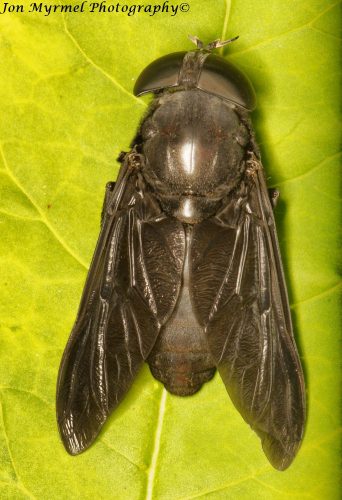
Interesting Facts about Horse Flies
Horse Fly Size and Appearance
Horse Fly adults grow up to (1/2 to 1 1/4 in (20-28 mm) long, with the largest having a wingspan of 2.4 in (60 mm). Impressive, right?
Horse fly larvae are white to tan in color, with 12 segments and can be as long as 2 in (55 mm) long. Adults can be all black, including the wings, or nearly black, gray, or brown-purple. They have prominent mouth parts. A male has a large head, with prominent compound eyes eyes that meet in the middle. The female’s eyes are separate.
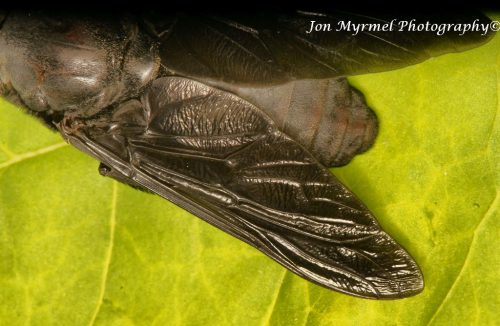
Where they Live
Horse flies are found worldwide, but are absent from the polar regions, and some islands such as Greenland, Iceland, and Hawaii. There are more than 160 species known!
There are more than 160 species of Horse Fly known Click To Tweet
Horse Fly Habitat
The horse fly requires warm, moist environments such as streams, freshwater and saltwater marshes needed for breeding. They lay their eggs on vegetation hanging over water, or on wet soil. Larvae live around ponds and ditches look like a regular house fly maggots.
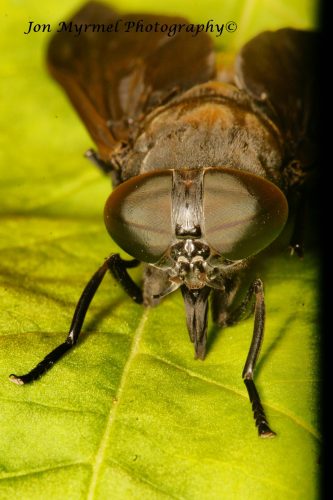
What Do Horse Fly’s Eat?
Females have very sharp mouth parts, which form into a stabbing organ with two pairs of sharp sawing edges that, with the help of muscles, move from side-to-side to enlarge the wound. There is a spongy part to lap up the blood that flows from the wound they’ve just created. This stabbing organ aggressively tears and slashes tissues and blood vessels of their victims to obtain protein for egg reproduction.
They suck on the blood of mammals, particularly cattle and other livestock. (They don’t usually bite humans, but when they do, you’ll certainly feel it. (Hence, my theory as to why mourning fly is an appropriate title.) The males, which lack mandibles, feed on nectar, plant juices, and pollen only, and some are important pollinators of certain flowers.
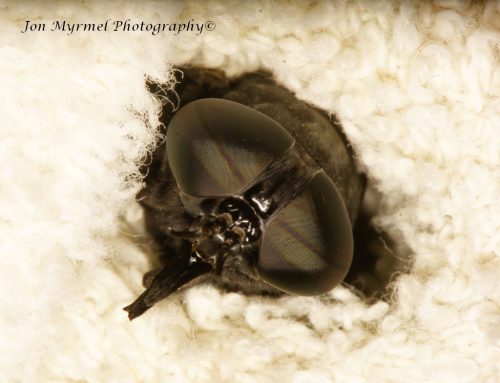
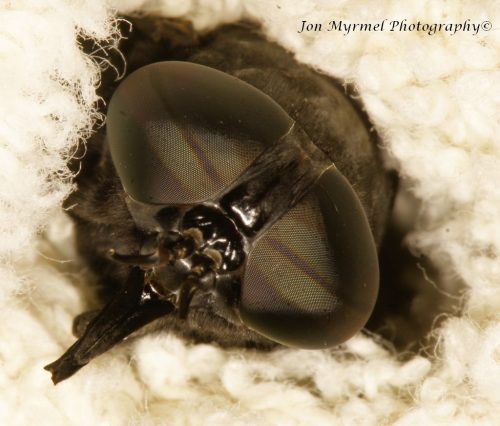
Horse Fly Life Cycle
One female can lay from 100-800 eggs per year, which are laid on vegetation hanging over bodies of water. The horse fly larvae is cannibalistic and feed on midges, crane flies and even other horse fly larvae. Larvae require two years to complete life-cycle. Adult males are short-lived. Females survive through fall.
Habits
Horse flies do not often bite humans, concentrating mostly on livestock. They can transmit bacterial, viral, and other diseases such as surra and anthrax, to humans and other animals through its bite.
The effect on livestock can be a serious problem. Blood loss and irritation from the flies can severely affect beef and milk production, as well as grazing. Livestock usually have no way of avoiding the painful bites, and millions of dollars have been spent trying to control these pests.Adult flies may pass a number of disease agents and nematode parasites to animals. Equine infectious anemia (EIA), sometimes referred to as swamp fever, occurs in the southeastern United States and is mechanically transmitted to horses and other equines by horse fly bites. Symptoms in animals include lethargy, weight loss and sometimes death. – Orkin
Female horse-flies can also transfer blood-borne diseases from one animal to another through their feeding habit.
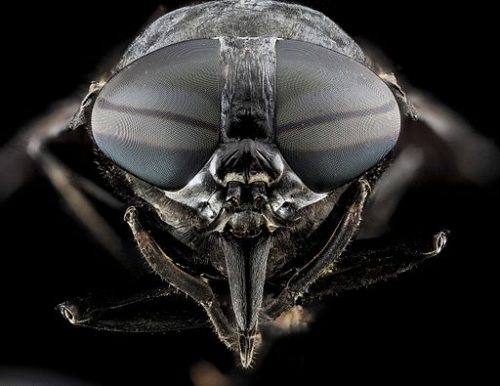
By USGS Bee Inventory and Monitoring Lab from Beltsville, USA [CC BY 2.0, via Wikimedia Commons]
Horse Fly Bites
If you have been bitten by a horse fly, you’ll already know that it’s painful. First a welt will appear and you may experience wheezing, weakness, dizziness, wheezing and angioedema (a temporary itchy, pink or red swelling around the eyes or lips); Some people will have an allergic reaction. The site of the bite should be washed and a cold compress applied. Scratching the wound should be avoided and an antihistamine preparation should be applied. In most cases, the symptoms subside within a few hours but if the wound becomes infected, you should seek medical attention.
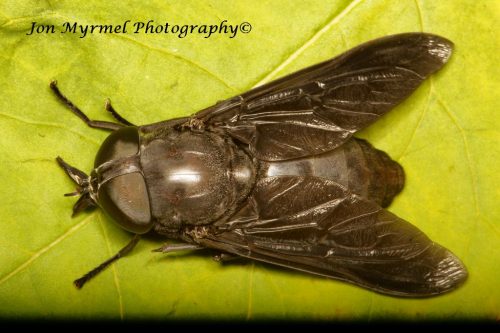
Sources: Bug Guide, Orkin, Wikipedia
Nighty-nite! Don’t let the Horse Flies bite!
There's a Huge Horse Fly at My Back Door - Yikes! Click To Tweet
*
As always, thank you for taking the time to visit my blog!
*
A QUESTION FOR YOU: Have you ever been bitten by a Horse Fly? Have your animals?
*** Leave a comment below and remember to share. ***
- Mindful Travel With Your Dog This Holiday Season - December 23, 2019
- A-Z of Australia’s Endangered Wildlife - December 20, 2019
- Teaching Your Kids How to Walk the Dog Safely - December 2, 2019

